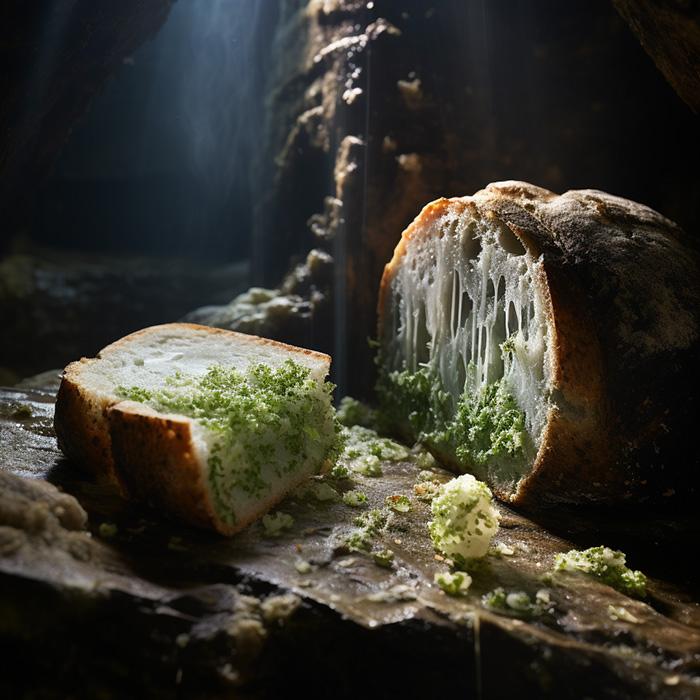The Refined Art of Blue: Exploring the Wonders of Roquefort and Gorgonzola Cheeses Through Penicillium Roqueforti
JANUARY 14, 2024

Penicillium Roqueforti: The Artisan Mold
At the heart of our story is Penicillium roqueforti, a mold found in specific regions' soil, instrumental in creating the distinctive blue or green veins in these cheeses. Interestingly, the same mold species yields different flavors in each cheese due to the unique environmental and traditional influences in their respective regions.
Roquefort: A French Delicacy
Hailing from southern France, Roquefort, often referred to as the 'King of Cheeses,' boasts a rich history. According to a charming legend, Roquefort was discovered by a shepherd who left his lunch of bread and ewe's milk cheese in the Combalou caves of Roquefort-sur-Soulzon, only to find it transformed by mold. While this story is a myth, the real history of Roquefort is no less fascinating. It was granted legal protection in 1411 by King Charles VI of France, underscoring its esteemed status.
Roquefort's unique production involves Penicillium roqueforti, which in the past was traditionally extracted by leaving bread in the caves for several weeks. Modern methods often use lab-grown mold for consistency. The cheese is exclusively made from the milk of Lacaune sheep. The entire production process adheres to stringent AOC (Appellation d'Origine Contrôlée) regulations, ensuring authenticity and quality.
Gorgonzola: An Italian Marvel
In contrast, Gorgonzola, originating from northern Italy's Lombardy and Piedmont regions, offers a creamy texture. It is generally made from cow's milk, contributing to its softer and creamier profile compared to Roquefort. Gorgonzola exists in two varieties: the milder Dolce and the more robust Piccante, each presenting a unique flavor intensity.
Culinary Significance and Health Aspects
Both Roquefort and Gorgonzola occupy significant places in their respective culinary traditions. Roquefort is a staple in French gastronomy, used in various regional dishes, including meat sauces, savory tarts, and quiches. Gorgonzola's versatility shines in Italian cuisine, enhancing pastas, bread, and risottos.
In terms of health, Roquefort is rich in protein, calcium, and several vitamins and minerals. However, it is also high in sodium and saturated fats, indicating the need for balanced consumption.
Conclusion
The story of Roquefort and Gorgonzola, united by Penicillium roqueforti, exemplifies the diversity and richness of cheese-making traditions. It highlights how a single microorganism can create a myriad of flavors and textures, each cheese a reflection of its unique terroir and history.
References:
Wikipedia - Roquefort
Cheese Origin - What is Roquefort?
I Love Cheese - Blue Cheese: Roquefort
Tasting Table - The Idyllic Myth Behind Roque
More in History
June 03, 2024
What Makes Florette Cheese a Modern Culinary Marvel?
May 20, 2024
How Did Smoked Gouda Cheese Become a Culinary Staple?
May 17, 2024
How Has Memorial Day Influenced the Evolution of Cheese?
March 09, 2024
Did St. Patrick's Day Traditionally Feature Green Cheese?
March 07, 2024
How Easter Traditions Shaped Cheese-Making History
February 29, 2024
Discovering the Essence of Smoked Gouda: A Journey Through Time
February 16, 2024
How Florette Reflects the Evolution of Cheese Making
February 13, 2024
How Has Emmental Cheese Become a Symbol of Culinary History?